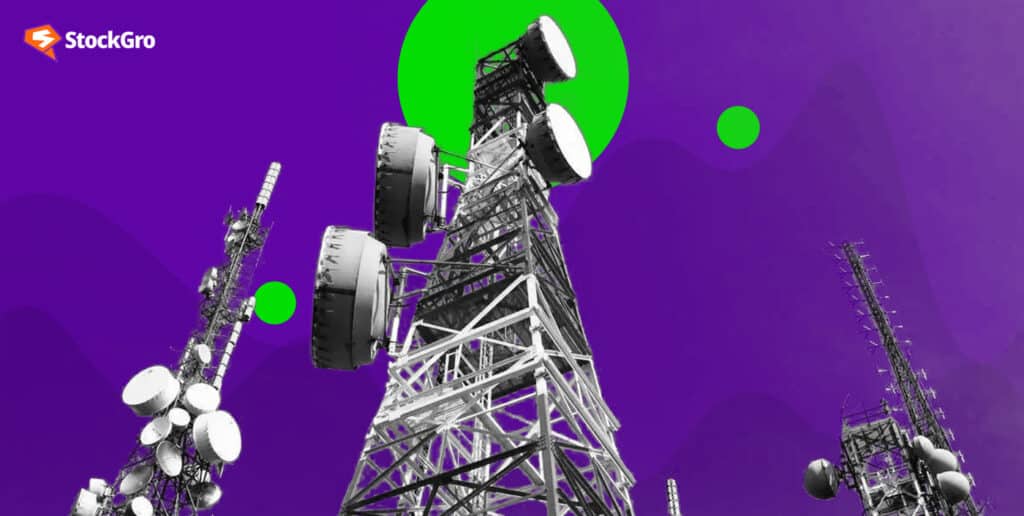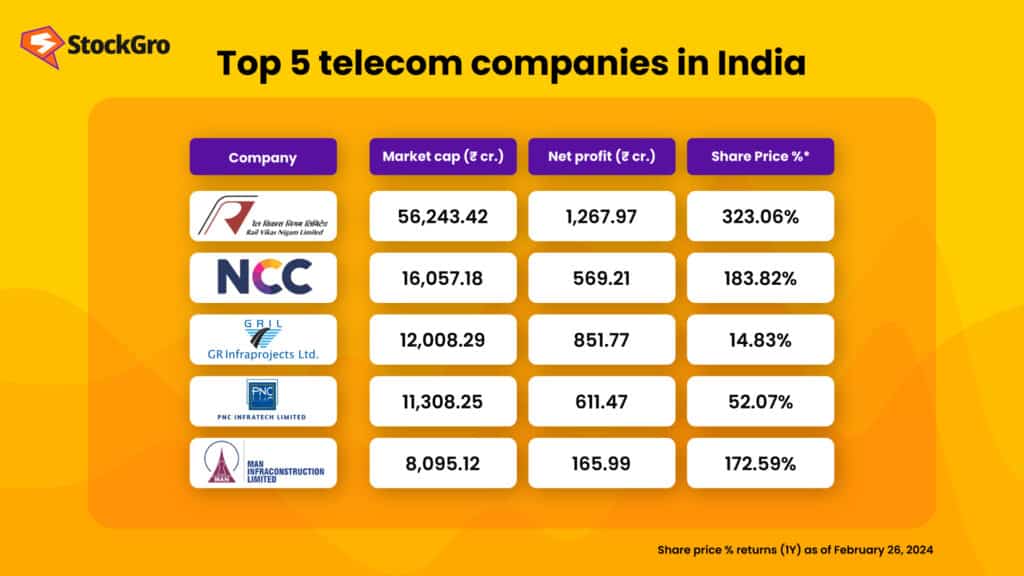
The telecom industry in India is the second largest and most vibrant sector globally, with over 1.18 billion subscribers as of October 2023. This industry has experienced remarkable innovations and transformations in recent years, including the rollout of 4G and 5G services, the emergence of mobile virtual network operators, etc.
The sector contributes significantly to India’s economy by generating jobs, improving productivity, and facilitating digital inclusion across the country. The Indian telecom industry offers massive opportunities for investors, entrepreneurs and consumers alike as it aims to realise the vision of a connected and empowered India.
In this article, let’s explore this dynamic industry in more depth.
Overview of telecom industry
India’s telecom industry has over 1.182 billion subscribers as of October 2023, ranking it second globally in terms of connectivity. This massive subscriber base includes both wireless and wireline users, demonstrating just how integral telecommunications have become for India’s vast population.
The country has a teledensity of 84.79%, which measures the number of telephones per 100 people and indicates the level of telecom penetration. The rural market, which offers a huge potential, has a teledensity of 58.11%, while the urban market has a teledensity of 133.45%.
India’s rapidly growing telecommunication industry, which is currently valued at approximately ₹3,000 billion, is projected to expand at a healthy annual rate of 7-9% in the coming years.
The country has also positioned itself as a core manufacturing hub for the global telecom sector due to supportive business policies and incentives for investors.
The telecom sector comes in fourth for foreign direct investment (FDI) flows. It brings in 6% of all foreign funds. Plus, it creates jobs! It directly employs 2.2 million folks and indirectly supports 1.8 million more.
The FDI inflows into India’s telecom sector significantly grew from $8.32 billion from 2002 to 2014, reaching $20.72 billion in the years between 2014 and 2021.
The telecommunications industry consists of several important subsectors that enable communication technologies, such as:
- Equipment
- Infrastructure,
- White Space Spectrum,
- Mobile Virtual Network Operators,
- Telephone service providers
- 5G, and
- Broadband
Also read: The Indian space industry: A new frontier for growth and innovation
Growth of the telecom industry in India
The telecommunication sector in India has seen extraordinary development and progress recently, owing to inexpensive rates, widespread accessibility, the execution of Mobile Number Portability (MNP), enhanced 3G and 4G coverage, and changing subscriber inclinations.
India’s mobile economy is growing rapidly and will have a major impact on the nation’s GDP. The progressive arrangements of the Government of India and their pro-venture approach have encouraged the speedy development of the Indian telecom industry.
The government has approved the sale of IMT/5G spectrum to enable the launch of 5G services throughout the country, enhancing digital connectivity.
GSMA predicts that India will be the world’s second-biggest smartphone market by 2025, with almost 1 billion devices active. By then, India could have 920 million individual mobile users, of which 88 million will be on 5G. India’s goal is to produce mobile phones worth $126 billion by 2025-26.
It is estimated that 5G technology will add around $450 billion to the Indian economy between 2023 and 2040.
The government of India has revealed its intention to set up 100 labs in engineering colleges for creating apps that use 5G services, as part of the Union Budget 2023. This will enable a new spectrum of opportunities, employment prospects and business models.
Must read: The renewable energy industry in India: A game-changer for the environment
Telecom companies in India
The telecom sector had more than eight rivals in March 2013, all vying for a larger market, with Airtel and Vodafone being the primary contenders.
But everything changed in 2016 when Reliance launched Jio, triggering a brutal price war. This fierce rivalry forced many operators to either lower their rates or quit the market completely.
Now, the Indian telecom market is ruled by four major players:
- Reliance Jio,
- Bharti Airtel,
- Vodafone Idea, and
- BSNL
However, Vodafone Idea and BSNL are in deep trouble, barely surviving due to persistent losses and the pressure of paying off huge debt.
As of December 2023, the top five telecom companies in India accounted for 98.35% of the total market share in terms of broadband subscribers.
These providers included:

For better understanding: Connecting communities: A mobile broadband case study
Future and challenges
The telecom sector in India is poised for a radical transformation as it embraces the opportunities and challenges of 5G and 6G technologies. These will enhance the speed, quality, and reach of communication and connectivity and boost the economy and productivity.
While there is great potential for growth in India’s telecom sector, certain challenges must first be addressed to fully realise this opportunity.
Extending fibre optic cable networks across more regions will be crucial to ensure that reliable high-speed internet access is available nationwide. Strengthening cybersecurity protocols is also essential to safeguard private data and online transactions.
Furthermore, telecom companies are having to adapt as customer preferences evolve. People today consume more digital media through streaming services available on over-the-top (OTT) platforms rather than traditional means. This shifting landscape requires telecom providers to innovate their offerings.
To better serve this audience, telecommunication companies are partnering with OTT providers to provide enticing bundles that incorporate access to streaming media and other digital offerings.
The Internet of Things (IoT), which involves connecting everyday devices to the Internet, is significantly contributing to growth in the telecom industry across multiple fields like healthcare, manufacturing, and urban infrastructure development.
For IoT to fulfil its potential, the sectors require a robust and reliable telecommunications network backbone supported by cutting-edge semiconductor technology.
The telecom industry is also seeing the rise of artificial intelligence, blockchain technologies and edge computing, which will unlock new opportunities and drive major changes. These innovative technologies are enabling telecom companies to develop novel solutions that could transform their operations and relationships with customers.
Bottomline
The telecom industry in India is a vital and vibrant sector that has revolutionised the communication and connectivity of the country. The industry has played a vital role in India’s economic and social progress, and its international reputation.
It has also demonstrated great adaptability and creativity in overcoming difficulties and rivals. With the advent of new technologies and opportunities, the telecom industry in India is set to scale new heights and achieve new milestones in the coming years.

